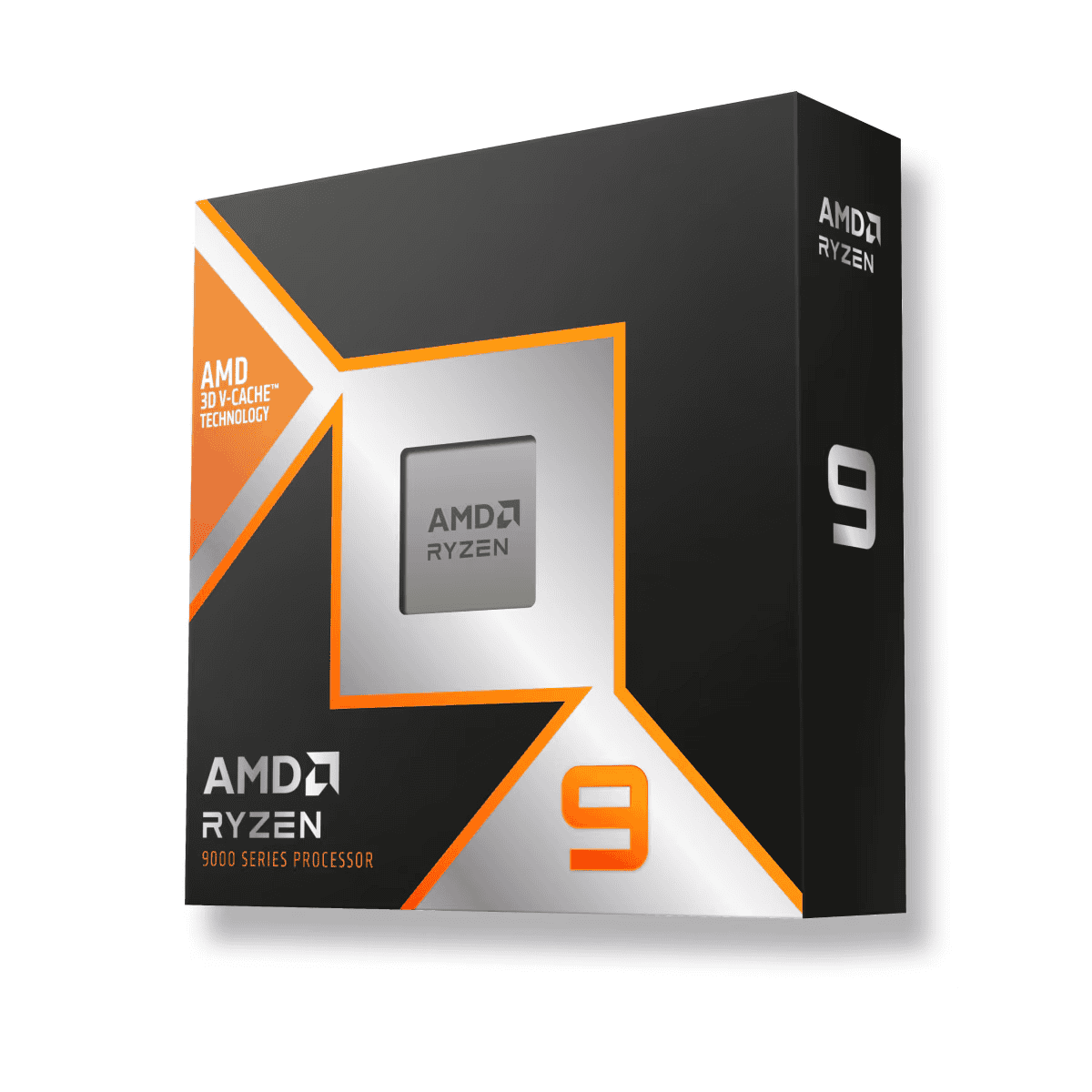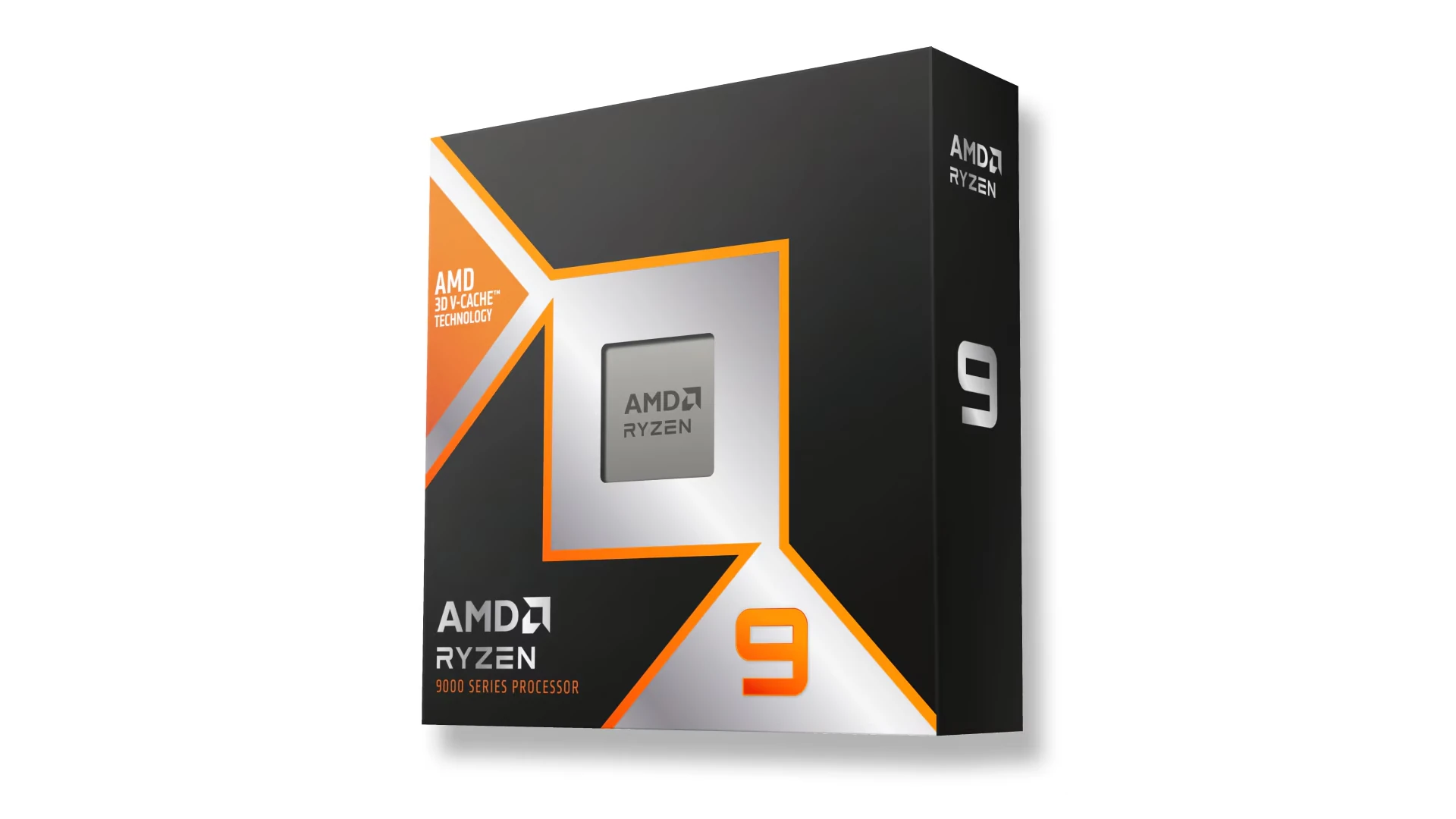AMD has unveiled its latest gaming processors, the Ryzen 9 9950X3D and 9900X3D, at CES 2025 in Las Vegas. These new CPUs aim to provide enhanced performance for gamers and content creators alike. The Ryzen 9 9950X3D boasts 16 cores and 32 threads, featuring AMD’s Zen 5 architecture and 3D V-Cache technology, which AMD claims delivers 20% faster gaming performance than Intel’s top Arrow Lake processors.
The Ryzen 9 9900X3D, with its 12 cores and 24 threads, complements the lineup, offering a 5.5GHz max boost and 140MB of cache. Both processors utilize AMD’s 3D V-Cache technology, which stacks additional cache on top of the CPU to improve gaming performance. These new CPUs are set to hit the market in the first quarter of 2025, providing PC enthusiasts with powerful options for their next build or upgrade.

Ryzen 9 9950X3D and 9900X3D Specifications
Here’s a comparison table of the AMD Ryzen 9 9900X3D and 9950X3D specifications:
| Feature | AMD Ryzen 9 9900X3D | AMD Ryzen 9 9950X3D |
|---|---|---|
| Cores/Threads | 12 cores / 24 threads | 16 cores / 32 threads |
| Base Clock | 4.4 GHz | 4.3 GHz |
| Max Boost Clock | Up to 5.5 GHz | Up to 5.7 GHz |
| L1 Cache | 960 KB | 1280 KB |
| L2 Cache | 12 MB | 16 MB |
| L3 Cache | 128 MB | 128 MB |
| TDP | 120W | 170W |
| Architecture | Zen 5 | Zen 5 |
| Process Technology | TSMC 4nm (CPU), 6nm (I/O) | TSMC 4nm (CPU), 6nm (I/O) |
| Socket | AM5 | AM5 |
| Memory Support | DDR5 (up to 5600 MT/s) | DDR5 (up to 5600 MT/s) |
| PCIe Support | PCIe 5.0 | PCIe 5.0 |
| Integrated Graphics | AMD Radeon Graphics (2 cores, 2200 MHz) | AMD Radeon Graphics (2 cores, 2200 MHz) |
| Native USB 4 (40Gbps) | 4 | N/A |
| Native USB 3.2 Gen 2 (10Gbps) | N/A | 4 |
| Native USB 3.2 Gen 1 (5Gbps) | 1 | N/A |
This table highlights the key differences and similarities between the two processors. The 9950X3D offers more cores and threads, as well as slightly higher boost clocks, while the 9900X3D has a higher base clock and a lower TDP. It’s also worth noting the difference in USB ports.
Comparing the Ryzen 9 9950X3D and 9900X3D
Key Specs of the New Ryzen CPUs
AMD’s new Ryzen 9 9950X3D and 9900X3D processors bring serious power for gamers and content creators. Both use the Zen 5 architecture and have a special 3D V-Cache, boosting game performance. But they have some key differences.
Core Count and Speed
The 9950X3D is the top dog, with 16 cores and 32 threads. This means it can handle many tasks at once, great for heavy workloads. It has a base clock of 4.3 GHz and can boost up to 5.7 GHz. The 9900X3D has 12 cores and 24 threads, with a slightly higher base clock of 4.4 GHz, but a lower boost of 5.5 GHz. If you do a lot of tasks at the same time, the 9950X3D is the better choice. If you want a bit more speed in lighter tasks, the 9900X3D might be good enough.
Cache and TDP
Both CPUs have a big 128 MB L3 cache thanks to the 3D V-Cache. This extra cache helps games run smoother. The 9950X3D has more L1 and L2 cache due to its extra cores. The 9950X3D has a higher TDP of 170W, meaning it uses more power and makes more heat. The 9900X3D has a TDP of 120W.
Other Features
Both CPUs use the AM5 socket and support fast DDR5 memory and PCIe 5.0. This means you get the latest tech for fast data transfer. They also have integrated AMD Radeon graphics, good enough for basic display output, but not for serious gaming. The 9900X3D has native USB 4 support, while the 9950X3D has more native USB 3.2 Gen 2 ports.
Specs Side by Side
| Feature | Ryzen 9 9900X3D | Ryzen 9 9950X3D |
|---|---|---|
| Cores/Threads | 12/24 | 16/32 |
| Base Clock | 4.4 GHz | 4.3 GHz |
| Max Boost Clock | Up to 5.5 GHz | Up to 5.7 GHz |
| L1 Cache | 960 KB | 1280 KB |
| L2 Cache | 12 MB | 16 MB |
| L3 Cache | 128 MB | 128 MB |
| TDP | 120W | 170W |
| USB 4 (40Gbps) | 4 | N/A |
| USB 3.2 Gen 2 (10Gbps) | N/A | 4 |
| USB 3.2 Gen 1 (5Gbps) | 1 | N/A |
Key Takeaways
- AMD’s new Ryzen 9 9950X3D and 9900X3D processors offer improved gaming and content creation performance
- The flagship 9950X3D features 16 cores and 3D V-Cache technology for enhanced speed
- Both CPUs will be available in early 2025, targeting high-end PC builds and upgrades
In-Depth Analysis of the Ryzen 9 9950X3D and 9900X3D
AMD’s latest Ryzen 9 processors bring significant improvements in gaming and content creation. These CPUs feature enhanced specifications and architectural innovations that translate into impressive performance gains.
Specifications and Architectural Innovations
The Ryzen 9 9950X3D boasts 16 cores and 24 threads, making it a powerhouse for multi-threaded applications. It features a base clock of 4.3 GHz and can boost up to 5.7 GHz. The 9900X3D, with 12 cores and 24 threads, has a base clock of 4.4 GHz and boosts to 5.5 GHz.
Both CPUs utilize AMD’s Zen 5 architecture, which brings improved efficiency and performance. The standout feature is the 3D V-Cache technology, significantly increasing the L3 cache size.
Key specifications:
- 9950X3D: 16 cores, 24 threads, 5.7 GHz max boost
- 9900X3D: 12 cores, 24 threads, 5.5 GHz max boost
- Both feature 3D V-Cache for enhanced gaming performance
Performance Benchmarks in Gaming and Applications
AMD claims the Ryzen 9 9950X3D delivers 20% faster gaming performance compared to Intel’s top Arrow Lake processors. In gaming, it performs similarly to the Ryzen 7 9800X3D, with differences within 1%.
For content creation, the 9950X3D excels in multi-threaded tasks. It shows significant improvements in applications like Cinebench R23 and Photoshop. The 9900X3D, while slightly behind in core count, still offers strong performance for both gaming and productivity workloads.
Benchmark highlights:
- Gaming: Both CPUs show excellent frame rates across various titles
- Content creation: 9950X3D leads in multi-threaded tasks, 9900X3D follows closely
Market Impact and Consumer Considerations
AMD’s launch of the Ryzen 9 9950X3D and 9900X3D gaming CPUs brings significant changes to the processor market. These new chips offer improved performance and features that may influence consumer buying decisions and market dynamics.
Availability and Pricing Strategy
The Ryzen 9 9950X3D and 9900X3D are set to hit store shelves in March 2025. AMD aims to make these processors widely available to meet expected high demand from gamers and enthusiasts.
Pricing for the new X3D chips is competitive. The 16-core Ryzen 9 9950X3D is priced slightly higher than its predecessor, reflecting its performance gains. The 12-core Ryzen 9 9900X3D offers a more budget-friendly option for those seeking X3D technology.
AMD’s pricing strategy positions these processors as premium products. This approach may impact the pricing of competing chips from Intel and affect the overall gaming CPU market.
Comparison with Predecessor and Competing Chips
The Ryzen 9 9950X3D boasts significant performance improvements over its predecessor, the Ryzen 9 7950X3D. AMD claims an 8% uplift in performance on average.
Key features of the new X3D processors include:
- 16 cores and 32 threads for the 9950X3D
- 12 cores for the 9900X3D
- 144MB of total cache
- Base clock speeds starting at 4.2 GHz
- Boost clocks up to 5.5 GHz
The Ryzen 9 9950X3D reportedly offers 20% faster gaming performance than Intel’s top Arrow Lake processors. This performance edge may shift market share in AMD’s favor, especially among gaming enthusiasts.







